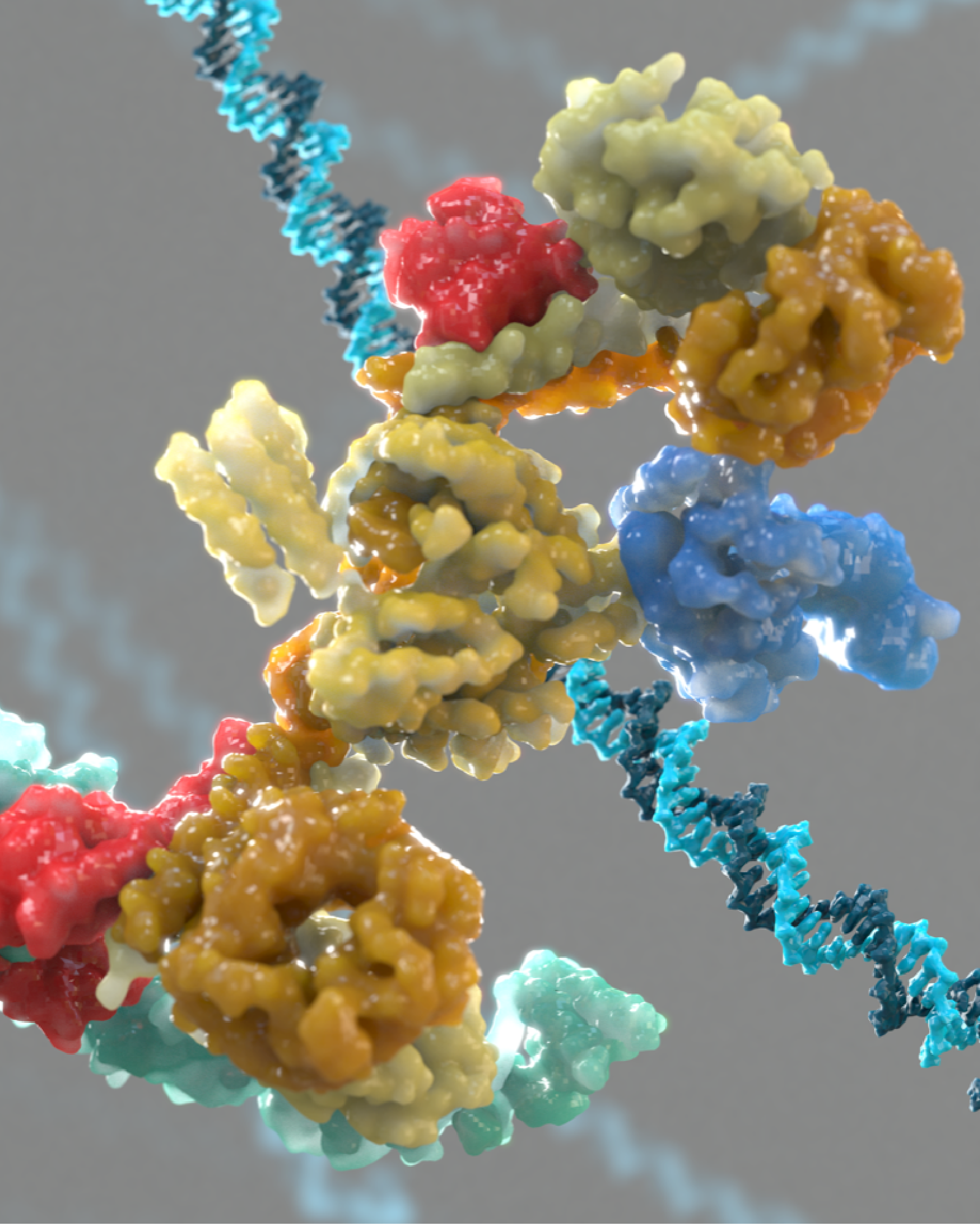
Fanconi anaemia is a rare inherited disorder that results in severe developmental defects, bone marrow failure, and predisposition to cancer. It is caused by a failure to repair DNA crosslinks - which can be induced by chemicals including chemotherapeutic drugs, by consuming alcohol, and also by normal cellular metabolism. Crosslinks prevent DNA from being copied into another copy of DNA (when the cell needs to divide) or into RNA (so that genes can be translated into proteins). Thus, the crosslinks render DNA non-functional.
In Fanconi anaemia, there are often defects in the Fanconi anaemia core complex - a large cellular machine that helps to resolve DNA crosslinks. Researchers from Dr Lori Passmore's group at the MRC Laboratory of Molecular Biology have now been able to visualise this protein complex using cryo-electron microscopy (cryoEM), allowing them to build new models for its structure. Their work provides new insights into how this machinery signals DNA damage, and provides an explanation into why certain parts of the complex are mutated in human disease.















